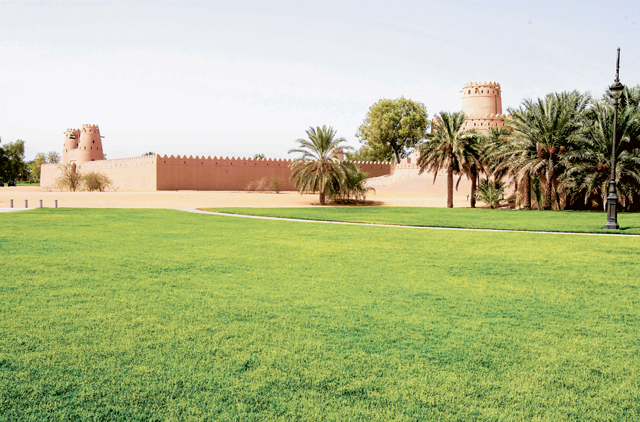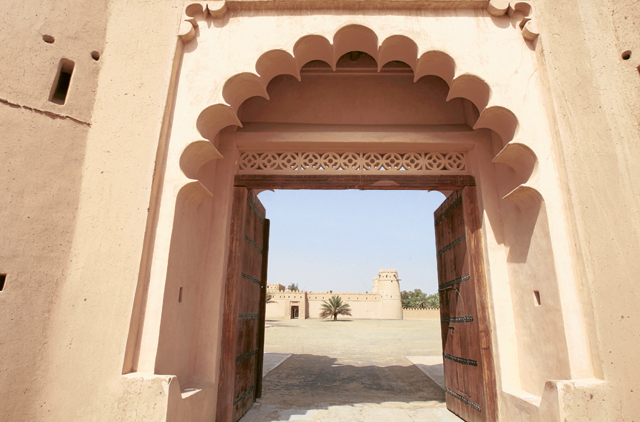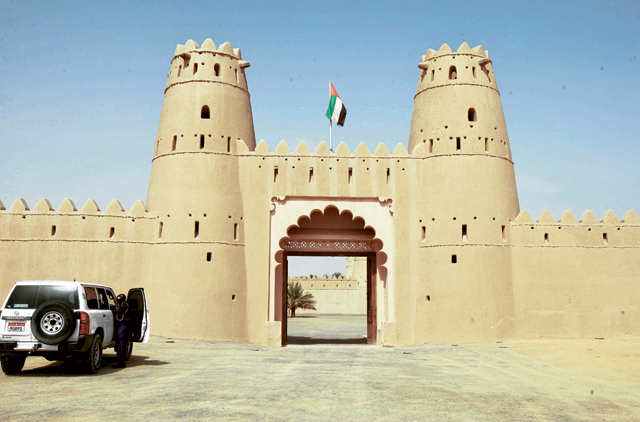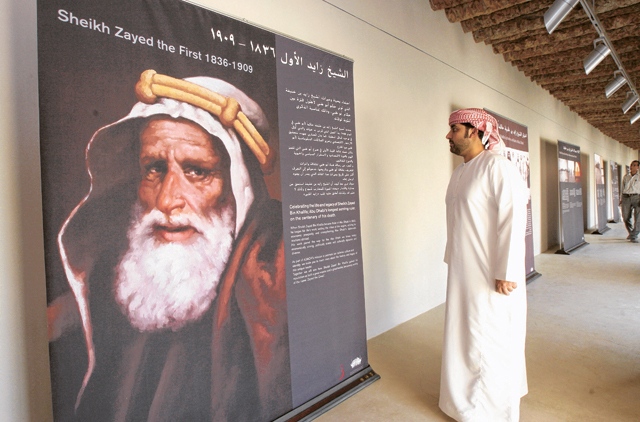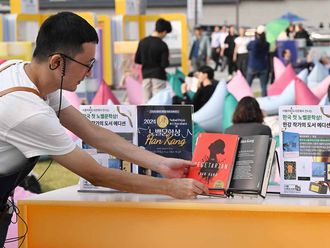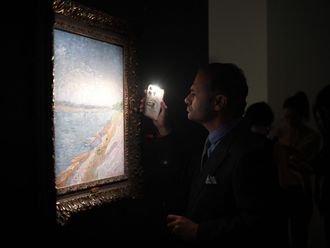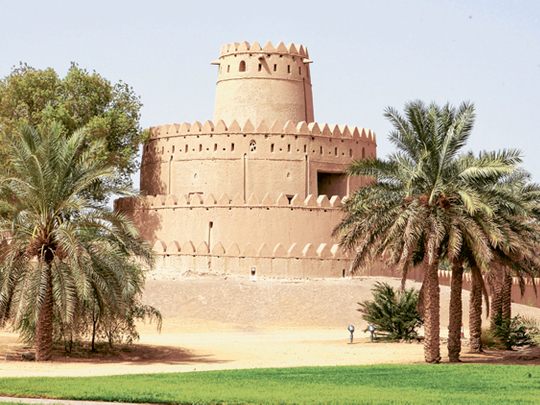
Al Ain An oasis of tranquillity carved out of the desert, Al Ain has a serene atmosphere offering a break from the hectic pace and pollution of the city.
The intimate, romantic and serene environment inspired the building of a royal summer residence on a dried-out oasis in Al Ain — Al Jahili Fort.
In late 2008 it was reopened as a cultural centre, which has ever since become the focal point of activities associated with culture and heritage in the Garden City.
Al Jahili is one of the largest forts in the UAE and was built in the 1890s on orders from Shaikh Zayed Bin Khalifa, also known as Zayed The First (ruler of Abu Dhabi 1855-1909).
It was home to members of the Al Nahyan ruling family and was later used by the Trucial Scouts, at the beginning of the 1950s.
Between 2007 and 2008, the fort was restored under a project implemented by the Abu Dhabi Authority for Culture and Heritage (Adach).
The historic fabric of the building has been carefully preserved and the restoration work has transformed it into a cultural centre and tourist attraction.
The fort now houses a visitor information centre, a permanent exhibition devoted to Wilfred Thesiger, the intrepid explorer; travel writer and photographer, who crossed the Empty Quarter twice in the 1940s, and a temporary exhibition gallery.
The natural climate control of the traditional mud brick has been enhanced by embedding cold water pipes into the mud plaster of the walls. As a result, the internal temperature remains a comfortable 22 degrees Celsius.
Summer residence
Mohammad Amer Al Niyadi, Director of Historic Environment at Adach, said the Al Jahili area used to be an oasis, but it dried out. Shaikh Zayed Bin Khalifa started building the fort in 1890. It was completed by 1898. The date is written on the gate. "It became a summer residence for the ruler, who sought to keep the peace between the various tribes at that time," he said. A video show in the fort's tower highlights the history of Al Ain.
Abdul Rahman Al Nuaimi, an Emirati archaeologist, said Thesiger's exhibition in the fort contains many photographs from the Petrie Museum in Oxford showing his passion for Arabia, where he is said to have spent "some of the happiest years of his life". Thesiger, who had a special relationship with Shaikh Zayed Bin Sultan Al Nahyan, the founder of the nation, visited the Al Jahili fort several times and took photos of it.
The fort's visual room contains a documentary film on Thesiger's life and his two Bedouin companions Salim Bin Kabina and Salim Bin Gabaisha.
Thesiger made his first crossing of the Empty Quarter in 1946, accompanied by the two boys.
Salem Hamad Al Shamsi, a watchman at the Al Ain National Museum, said Al Jahili Fort was a symbol of power and a royal summer residence.
Work on the fort began in 1891 under Shaikh Zayed the First and was completed in 1898, assisted by the fact that the closing years of the 19th century marked a period of relative political stability.
Al Shamsi said the choice of location may have been influenced by the availability of water and the fertile land in the area, where he owned a farm. "It was customary for Abu Dhabi's leaders to escape from the coastal humidity of the summer months to the dryer, more tolerable climate of Al Ain," Al Shamsi said.
The fort would also have provided a refuge in times of attack for the inhabitants of the oasis. After the death of Shaikh Zayed in 1909, his elder son Shaikh Khalifa continued to live in the fort with his family and he farmed in the area.
The building fell into disrepair by the early 1950s, when British forces came to Al Ain and requisitioned the fort as a base for a unit of the Trucial Oman Levies. Barracks and other buildings were added to the earlier fort and tower.
The original part of Al Jahili Fort consists of two buildings, a square fort and a separate round tower composed of four concentric tiers. The design of this round tower may reflect an ancient tradition of fortification in the oases of Al Ain, for a circular tower of similar construction, excavated at Hili some ten kilometres away, dates back to the third millennium BC. The square fort was originally entered through the gate in the south wall, which is surmounted by an inscribed poem naming Shaikh Zayed as its founder: "A door of goodness is opened in glory's chapter, Where joy and happiness with high glory reside, The blessings of honour said ‘Mark this house, A house of high standing built by Zayed Bin Khalifa'."
Restoration
Attached to the fort is a mosque which has recently been restored. This mosque may also date back to the foundation of the fort by Shaikh Zayed the First, for it was also renovated during the reoccupation of the fort in the 1950s.
Old photographs show that the oasis settlement lay adjacent to the mosque in the area of the present gardens.
Al Jahili Fort was awarded the 2010 International Architecture Award by the Chicago Athenaeum Museum of Architecture and Design and the European Centre for Architecture Art Design and Urban Studies.
The competition attracted architectural firms from more than 45 countries over five continents.
One of the largest forts in the UAE, Al Jahili Fort was built in the 1890s on orders from Zayed The First. It served as a summer residence for the ruler. The natural climate control of the traditional mud brick has now been enhanced by embedding cold water pipes into the walls. The fort houses a permanent exhibition devoted to Wilfred Thesiger, the explorer, writer and photographer. It is a fine blend of the old and new.
ROYAL RESIDENCE
information
n The Al Jahili Fort is closed only on Saturdays. It is open for public viewing on all public holidays.
n There is a Dh1 entry free for adults. Children enter free.
n Winter visiting hours are from 8.30am to 1pm and 3.30pm to 5.30pm
n Summer timings are 8.30am to 1pm and 4.30pm to 6.30pm.


